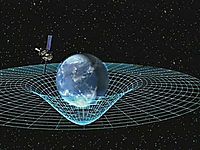
Photo from wikipedia
The Norwegian University of Life Sciences (NMBU) started global radiation (G) measurements in 1949. PAR measurements started in 1978 as part of a Nordic project. The project terminated in 1981,… Click to show full abstract
The Norwegian University of Life Sciences (NMBU) started global radiation (G) measurements in 1949. PAR measurements started in 1978 as part of a Nordic project. The project terminated in 1981, but the measurements continued at NMBU. We have used the data from the Nordic project’s seven stations and the long time series from NMBU to investigate the limitations of using the relative flux density method for the estimation of PAR from G. The yearly mean value of the relative flux density PAR/G at NMBU is 0.48 with a standard deviation of 0.02. The monthly mean values of PAR/G show a seasonal variation, with its maximum (0.50) in late summer and minimum in the winter months (0.45). The seasonal variation corresponds to 15% difference in relative cloud cover. Data from the original Nordic project gave the opportunity to investigate the usability of the relative flux density method in the Nordic area. The flux ratio for July was generally larger than the ratio for September or October, even though the differences are small and not statistically significant. In trying to explain this, one obvious candidate is the cloud cover. In the lack of cloud data, time records of global radiation were used to select fair weather and overcast days. For all stations, fair days show higher flux ratios and overcast days show lower flux ratios. Neglect of cloud cover may lead to an error in the calculation of PAR from the simple formula PAR = constant G of the order of 10%.
Journal Title: Theoretical and Applied Climatology
Year Published: 2019
Link to full text (if available)
Share on Social Media: Sign Up to like & get
recommendations!